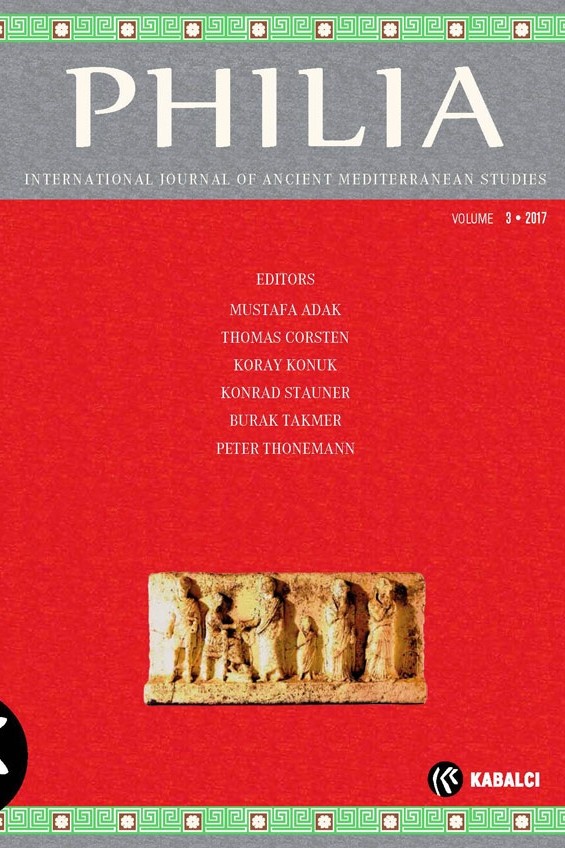İmparatorluk Dönemi’nde Perge Akropolis’i ve Kent için Önemi
Yeni kent ovada kurulunca, Perge akropolis’inin
terk edildiği yönünde genel bir kanı bulunmaktadır. Bununla birlikte, Sencer
Şahin tarafından yayımlanan yazıtların da gösterdiği gibi, İmparatorluk ve
Bizans dönemlerinde burada kayda değer faaliyetler sürdürülmeye devam etmiştir.
Bunlar akropolis’te 1994 yılından beri sürdürülen ve söz konusu faaliyetlerin
Roma ve Bizans dönemlerinde taşıdığı öneme dair verileri gün yüzüne çıkaran
kazılarla da doğrulanmıştır. Dolayısıyla bir yandan eski tapınakların bulunduğu
akropolis dini merkez olmaya devam etmiş, öte yandan da kentin macellum’un,
hamamların, palaestra’nın, tiyatro ve stadion’un yer aldığı ovada kurulan yeni
kısmı ticaret, gönenç ve eğlencenin merkezi olmaya başlamış gözükmektedir.
Bunun yanında Perge, tepe üzerindeki eski yerleşim (akropolis) ile ovadaki
yenisinin daha detaylı çalışmaları hak eden ve oldukça ilginç bir durum arz
eden birlikte varlığını ortaya koymaktadır.
Anahtar Kelimeler:
Perge, Akropolis, Artemis Pergaia, Artemis Pergaia Tapınağı, yukarı ve aşağı kent ilişkisi, Forum Augustum, euripus, urbanistik doku
Die Akropolis von Perge in der Kaiserzeit und ihre Bedeutung für die Stadt
There is the widespread opinion that the acropolis
of Perge was abandoned when the new city in the plain had been founded. However
as the publication of the inscriptions by Sençer Şahin is showing, there
continued important activities on the acropolis during the Imperial and the
early Byzantine era. They have been confirmed by the excavations on the
acropolis since 1994 which have brought to light many testimonies for their
high significance in Roman and Byzantine times. It
appears that on the one hand the acropolis with its old sanctuaries remained
the sacral center, on the other hand the new part of the city in the plain with
the macellum, the baths, the palaestra, the theatre and stadium became the
center of commerce, wellness und leisure. In addition Perge shows
a most interesting coexistence of the old town on the hill (acropolis) and the
new one in the plain which deserves further research.
Keywords:
Perge, acropolis, Artemis Pergaia, sanctuary of Artemis Pergaia, relation of the upper and the lower city, forum Augustum, euripus, urbanistic structure,
___
- Abbasoğlu 2001 H. Abbasoğlu, The Founding of Perge and its Development in the Hellenistic and Roman Periods, in: D. Parrish (Hrsg.), Urbanism in Western Asia Minor. New Studies on Aphrodisias, Ephesos, Hierapolis, Pergamon, Perge and Xanthos, Portsmouth 2001, 173–188 (Journal of Roman Archaeology, suppl. Ser. 45).
- Abbasoğlu 2003 H. Abbasoğlu, Zur Geschichte der Ausgrabungen in Perge, in: H. Abbasoğlu – W. Martini (Hrsgg.), Die Akropolis von Perge. Survey und Sondagen 1994–1997, Mainz 2003, 1–12.
- Abbasoğlu 2006 Perge, in: W. Radt (Hrsg.), Stadtgrabungen und Stadtforschung im westlichen Kleinasien: Geplantes und Erreichtes, Byzas 3, İstanbul 2006, 289–302.
- Bianconi 1975 M. Bianconi, Storia di Arezzo. Centro Studi Toscani, Arezzo 1975.
- Brandt – Kolb 2005 H. Brandt – F. Kolb, Lycia et Pamphylia: Eine römische Provinz im Südwesten Kleinasiens, Mainz am Rhein 2005.
- Laube 2006 I. Laube, Thorakophoroi. Gestalt und Semantik des Brustpanzers in der Darstellung des 4. bis 1. Jhs. v.Chr., Tübingen 2006.
- MacKay 1990 Th. S. MacKay, The Major Sanctuaries of Pamphylia and Cilicia, ANRW II 18,3, 1990, 2048–2082.
- Mansel – Akarca 1949 M. Mansel – A. Akarca, Pergede Kazılar ve Araştırmalar, Ankara 1949.
- Martini 2003 W. Martini, Topographie und Architektur, in: H. Abbasoğlu – W. Martini (Hrsgg.), Die Akropolis von Perge. Survey und Sondagen 1994–1997, Mainz 2003, 13–78.
- Martini 2004 W. Martini, Zur Lage des Artemis-Heiligtums in Perge, in: T. Korkut (Hrsg.), Anadolu’da Doğdu. Festschrift für Fahri Işık zum 60. Geburtstag, Istanbul 2004, 479–492.
- Martini 2008 W. Martini, Perge und seine Akropolis. Zur Funktion der Akropolis in der frühen und mittleren Kaiserzeit, in: İ. Delemen – S. Çokay-Kepçe – A. Özdizbay – Ö. Turak (Hrsgg.), Euergetes. Festschrift für Prof. Dr. Haluk Abbasoğlu zum 65. Geburtstag. Bd. 1, Antalya 2008, 779–797.
- Martini 2010 W. Martini, Die Akropolis von Perge. Vom Siedlungsplatz zur Akropolis, Stuttgart 2010.
- Martini et al. 2008 W. Martini – H. Brückner – N. Eschbach – D. Kelterbaum – M. Recke, Der Flusshafen von Perge in Pamphylien. Ein geoarchäologischer Survey löst ein altes Problem, AA 2008, 163–179.
- Onurkan 1969–1970 S. Onurkan, Artemis Pergaia, Ist.Mitt. 19/20, 1969–1970, 289–298.
- Özdizbay 2012 A. Özdizbay, Perge’nin M.S. 1.–2. Yüzyıllardaki Gelişimi. Die Stadtentwicklung von Perge im 1.–2. Jh. n.Chr., Antalya 2012 (Adalya Suppl. 10).
- Şahin 2003 S. Şahin, Inschriften auf der Akropolis von Perge, in: H. Abbasoğlu – W. Martini (Hrsgg.), Die Akropolis von Perge. Survey und Sondagen 1994–1997, Mainz 2003, 167–174.
- ISSN: 2149-505X
- Başlangıç: 2015
- Yayıncı: Kabalcı Yayıncılık
Sayıdaki Diğer Makaleler
Portulanlar ve Portulan Haritaları Işığında Hellespontos ve Bithynia Sahilleri
Roma İmparatoru Hadrianus ve Anadolu: Geziler, Eyaletler ve Kentler
Mehmet Ali KAYA, Kevser TAŞDÖNER ÖZCAN
Iulius Iulianus Phrygia-Caria Eyaleti’nin İlk Valisi miydi?
Phrygia’dan Dionysos İçin Yeni Bir Adak Yazıtı
Asia, Galatia ve Lycia-Pamphylia Eyaletleri Sınırında Phrygia Paroreios ve Pisidia
Diocletianus’un Aphrodisias’tan İ.S. 1/9/301 Tarihli Revalüasyon Fermanı Üzerine Notlar
Bolu’dan Caracalla Dönemi’ne ait bir ad fines Miltaşı
Pamphylia’nın İlk Neokoros Unvanının Perge’ye Verilmesi Hakkında Düşünceler
